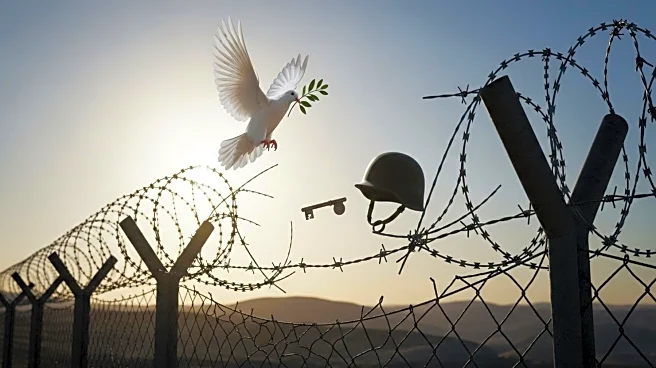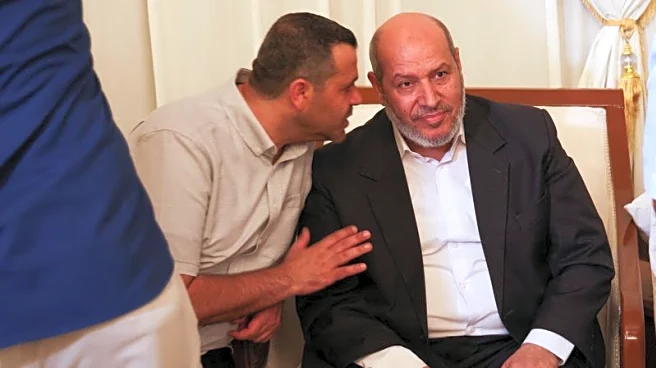What's Happening?
Israeli forces have begun withdrawing from positions in Gaza after the Israeli government approved the first stage of President Trump's ceasefire plan. This development marks the start of a ceasefire aimed at establishing lasting peace in the region. The ceasefire follows a period of intense conflict, with Israeli airstrikes causing significant destruction in Gaza. The agreement includes a hostage exchange deal, with Hamas given 72 hours to release hostages, while Israel will release Palestinian detainees. The ceasefire is seen as a critical step towards ending the war, although skepticism remains due to previous failed ceasefire attempts.
Why It's Important?
The ceasefire is significant as it aims to halt ongoing hostilities and facilitate humanitarian aid into Gaza, potentially alleviating severe malnutrition and starvation. The agreement could lead to a broader peace initiative in the Middle East, with President Trump actively involved in the process. The successful implementation of the ceasefire could stabilize the region, impacting geopolitical dynamics and international relations. However, the skepticism surrounding the deal highlights the challenges in achieving lasting peace, with previous agreements having been broken.
What's Next?
In the coming days, the focus will be on the release of hostages and detainees, as well as the opening of the Rafah border to allow aid into Gaza. President Trump is expected to visit Egypt and Israel, underscoring his commitment to the ceasefire plan. The situation remains delicate, with the potential for renewed conflict if the agreement is not fully adhered to. The international community will be closely monitoring the developments, with hopes for a permanent resolution to the conflict.












